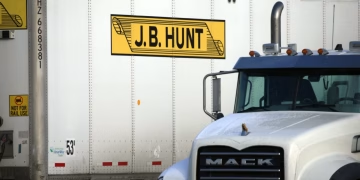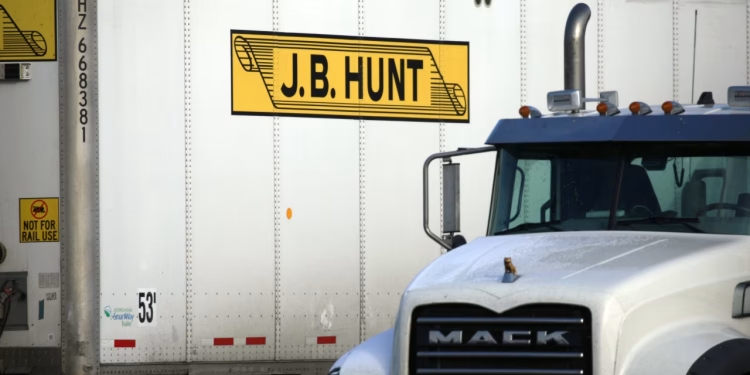By Eva Richardson | The Logistic News
The U.S. freight and logistics sector is facing deepening economic strain as a prolonged freight recession, now in its second year, continues to put pressure on major carriers. This week, J.B. Hunt Transport Services, one of the country’s largest trucking and intermodal logistics firms, reported an 8% decline in operating income year-over-year, sparking a nearly 9% drop in its stock price.
Although J.B. Hunt narrowly beat Wall Street earnings estimates, the company’s results reflect broader challenges facing the freight sector: overcapacity, soft consumer demand, high inflation, and geopolitical trade uncertainty.
“This is one of the most difficult environments we’ve seen in decades,” said Shelley Simpson, CEO of J.B. Hunt. “We’re not seeing the inflation relief we would typically rely on during downturns. Instead, it’s compounding the problem.”
The freight slowdown, which began in 2023, has worsened in early 2025 as retailers and manufacturers continue to scale back inventory restocking amid sluggish demand. Meanwhile, the industry is still grappling with an 18% increase in trucking capacity since 2020, which JPMorgan analysts say could take up to 15 years to normalize under current market conditions.
Compounding the issue are uncertainties tied to trade policy, especially the return of Trump-era tariffs. Many companies are holding off on supply chain shifts, awaiting greater clarity from Washington.
“The combination of overcapacity and regulatory uncertainty is freezing decision-making,” said a senior analyst at FreightWaves. “There’s little appetite for expansion or innovation when margins are this thin.”
Despite some hope that a mid-year retail rebound might revive freight flows, most analysts caution that a meaningful recovery may not arrive until 2026 or later.
As the downturn persists, logistics providers are expected to cut costs, consolidate operations, and invest selectively in automation to maintain competitiveness in a low-growth environment.























